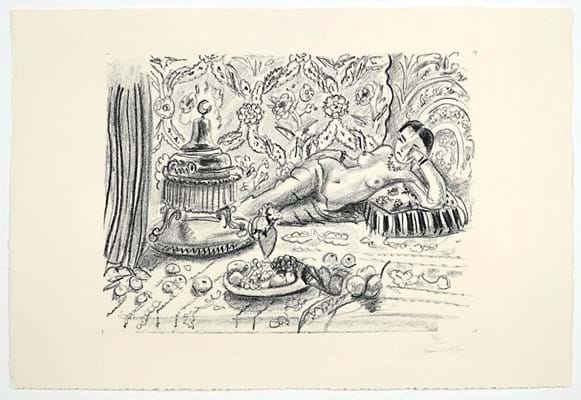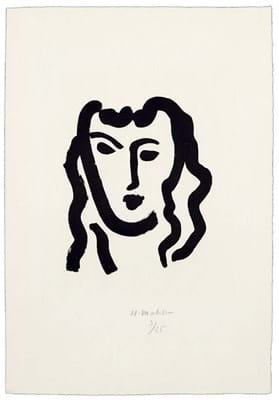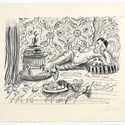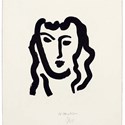The collection as a whole is believed to be the largest held by any commercial gallery and the selection on offer comprises 62 works – some of Jacobson’s favourites – produced from 1900-50.
Matisse gained notoriety early in his career from his work as one of the Fauves, a group known for use of intense colour.
Today, it is still Matisse’s colour-rich paintings that tend to command the highest prices at auction – notably, in May, his Odalisque couchée aux magnolias (1923) made a new record of $80.8m (£59.5m) as part of Christie’s Rockefeller collection sale.
However, the show in question shines the spotlight on the artist’s mastery of line, particularly evident in these monochromatic works.
Matisse used printmaking as an extension of drawing and an opportunity to experiment with simplified or abstracted line. He described his process as an attempt to capture the essence of his subject. “I will concentrate the meaning of the body by seeking its essential lines,” he wrote in Notes of a Painter (1908). “The charm will be less obvious at first glance, but it must eventually emerge from the image…[it] will have a broader meaning, and one more fully human.”
He returned repeatedly to certain compositions to adapt and perfect them during his career.
Among these were the seated and reclining female form. All but two of the subjects represented at this show, in fact, are women – the others are both self-portraits.
Distinct print methods
Six distinct printmaking approaches are featured in the show: lithography, etching, linocut, woodcut, dry point and aquatint. The earliest of these is one of the self-portraits done in drypoint and depicting the artist in an intense act of observational drawing.
Rarest and least represented among the techniques is woodcut. Matisse created only three during his career, concentrating on the method from 1906-07, and this show contains one example of them, Petit Bois Clair.
The latest prints are aquatints from the late 1940s and showcase the artist’s simplified and dramatic use of lines. Though aquatint is used typically to add shade and depth to compositions, his technique here focuses on bold strokes, capturing his emotional response to his subjects.
Among the aquatints in the show are some particularly rare examples including Grande Masque (1928), a small edition, most of which is held in museum collections.
Pieces are offered at prices ranging from $15,000-180,000. Also available is a fully illustrated catalogue, featuring an essay by John Yau, for £25.
Bernard Jacobson Gallery was founded in 1969 as a publisher and dealer in prints and, now located in Duke Street St James’s, exhibits and trades internationally.


















